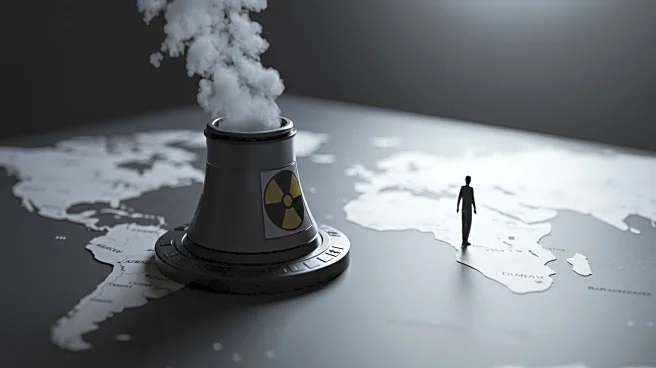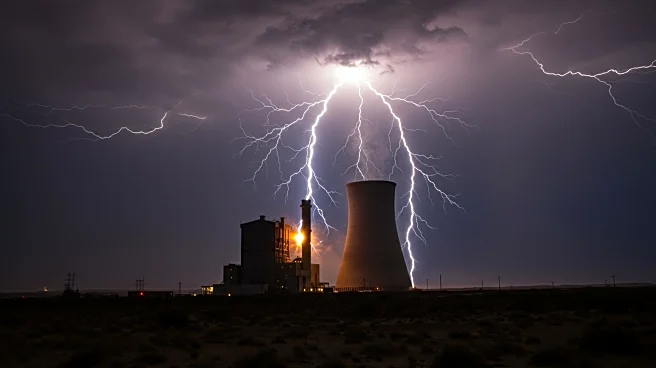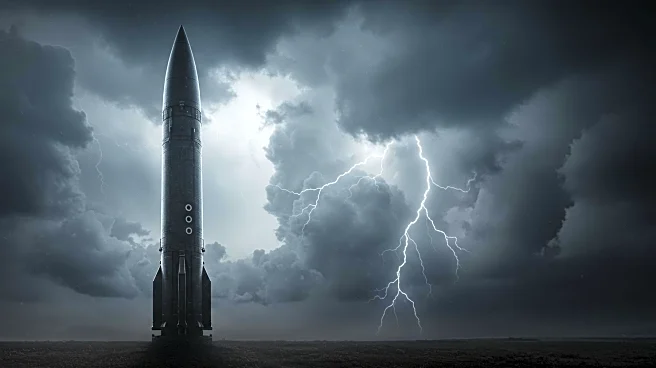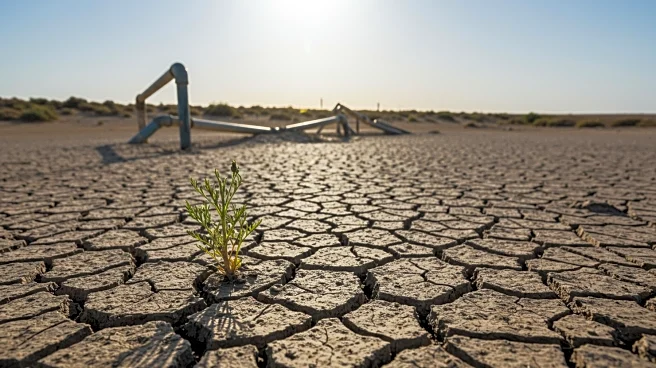What's Happening?
Iran is facing a severe drought that has drastically reduced water levels in its dams, rivers, and lakes. The situation has been exacerbated by extreme heat and government mismanagement, leading to warnings that Tehran, a city of approximately 10 million people, could run out of water within weeks. The drought has persisted for five years, with this summer being particularly harsh. Kaveh Madani, a former senior official with Iran's Department of Environment, describes the situation as 'water bankruptcy,' with severe shortages causing irreparable damage. Lake Urmia, one of the world's largest hypersaline lakes, is nearly dry. The crisis is partly due to Iran's focus on agricultural water use, which accounts for over 90% of the country's water allocation despite contributing minimally to the economy.
Why It's Important?
The water crisis in Iran has significant implications for the country's stability and governance. The shortage is forcing farmers to migrate to urban areas, straining already limited water supplies in cities like Tehran. The government's response, including 12-hour water cuts, has been met with public dissatisfaction. The crisis could threaten the regime's stability, as evidenced by protests and international attention, including comments from Israeli Prime Minister Benjamin Netanyahu. The situation highlights the need for Iran to reconsider its agricultural policies and invest in new technology and infrastructure, although this is challenging due to international sanctions and internal mismanagement.
What's Next?
Iran's government faces pressure to address the water crisis through policy changes and infrastructure investment. However, overcoming the challenges posed by sanctions and internal corruption requires strong political will. The government may need to shift its focus from food self-sufficiency to sustainable water management. Additionally, international offers of assistance, such as those from Israel, could play a role in future solutions if political conditions allow. The potential for rain offers some hope, but the lack of effective water storage systems means immediate relief is unlikely.
Beyond the Headlines
The water crisis in Iran underscores broader issues of environmental mismanagement and political instability. The government's prioritization of political and economic interests over environmental and social considerations has contributed to the crisis. The situation also highlights the impact of climate change and the need for global cooperation in addressing water scarcity. The crisis could lead to long-term shifts in Iran's domestic policies and international relations, particularly if external assistance becomes viable.












